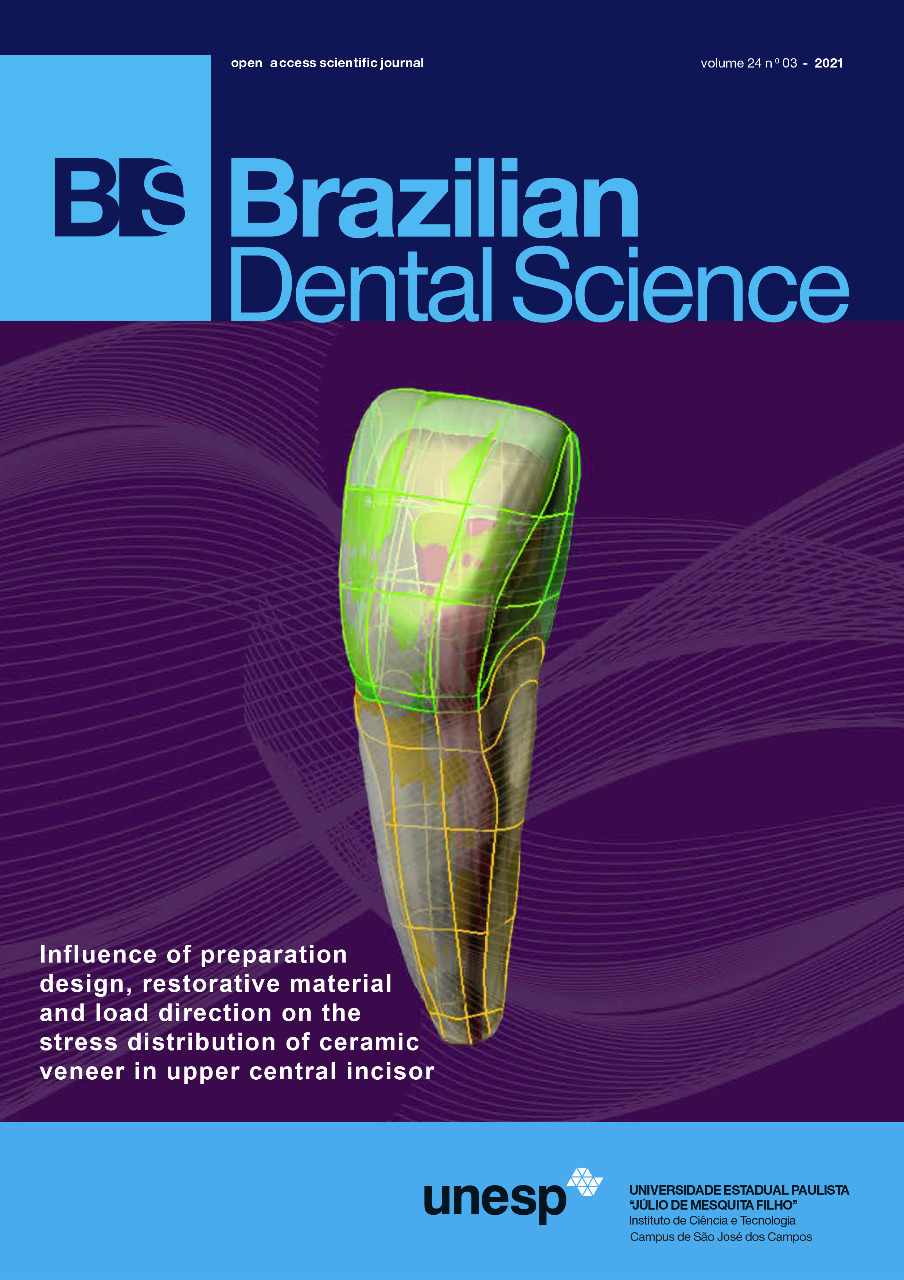One-year clinical evaluation of IPS Empress CAD versus polished Celtra Duo ceramic Laminate veneers (randomized controlled clinical trial)
DOI:
https://doi.org/10.14295/bds.2021.v24i3.2595Resumo
Objective: To evaluate fracture resistance and survival rate of IPS Empress CAD versus Polished Celtra Duo ceramic laminate veneers. Material and Methods: Thirty-six ceramic laminate veneers were fabricated for maxillary anterior teeth. The patients were divided into two groups according to the material Group 1(control group) fabricated from IPS Empress CAD laminate veneers and group 2(intervention group) fabricated from Polished Celtra Duo laminate veneers. Standardized the same preparation with butt joint design and chamfer finish line located supra gingival were performed for all the teeth. The fabrication of the veneers was performed using Cad\Cam (Ceramill motion) machine, with software (Exocad). The veneers surfaces were treated and silanated according to the manufacture instruction of each ceramic and enamel surfaces were etched where total etch adhesive protocol was obeyed using BISCO. Follow up sessions were done every two months up to one year for each patient using dental probe and operator vision to evaluate the fracture, survival rate, marginal adaptation, sensitivity and caries. according to USPHS criteria (United States Public Health Service). This was performed by an experienced, blinded investigator. Results: Fracture resistance, marginal adaptation, retention, caries and sensitivity were evaluated according to the criteria of USPHS and we found there is no significant difference as both groups scaled zero score. Conclusion: Both IPS Empress Cad and Polished Celtra Duo laminate veneers revealed successful clinical performance in terms of fracture resistance, marginal adaptation, retention, and sensitivity after one year follow up period.
Keywords
Ceramic laminate veneers; IPS Empress CAD; Celtra DUO; Clinical performance.
Downloads
Downloads
Publicado
Versões
- 2021-07-01 (2)
- 2021-07-01 (1)
Como Citar
Edição
Seção
Licença
TRANSFERÊNCIA DE DIREITOS AUTORAIS E DECLARAÇÃO DE RESPONSABILIDADE
Toda a propriedade de direitos autorais do artigo "____________________________________________________________________" é transferido do autor(es) para a CIÊNCIA ODONTOLÓGICA BRASILEIRA, no caso do trabalho ser publicado. O artigo não foi publicado em outro lugar e não foi submetido simultaneamente para publicação em outra revista.
Vimos por meio deste, atestar que trabalho é original e não apresenta dados manipulados, fraude ou plágio. Fizemos contribuição científica significativa para o estudo e estamos cientes dos dados apresentados e de acordo com a versão final do artigo. Assumimos total responsabilidade pelos aspectos éticos do estudo.
Este texto deve ser impresso e assinado por todos os autores. A versão digitalizada deverá ser apresentada como arquivo suplementar durante o processo de submissão.




























